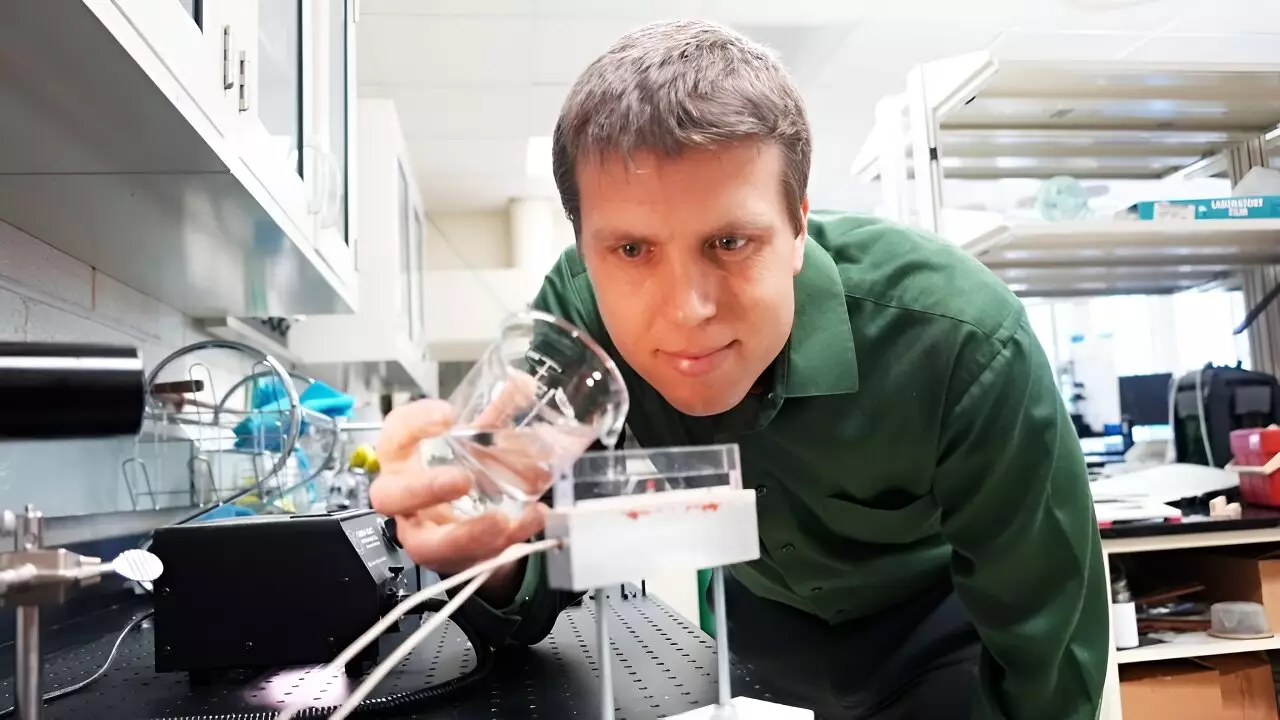The quest for more energy and cost-efficient heat transfer methods continuously drives researchers to explore dynamic phenomena. Among the diverse range of cooling operations, water remains the go-to resource for large-scale applications such as data centers and nuclear power plants. Associate professor Jonathan Boreyko, together with his team at the Nature-Inspired Fluids and Interfaces Lab, tirelessly investigates the movement and behavior of water. Their groundbreaking research involves the creation of water droplets propelled by surface tension and frost that jumps via electrostatics.
Boreyko’s work spans over three volumes, with the first two exploring the liquid and solid phases. This groundbreaking trilogy culminates in their latest publication, which delves into the third phase: boiling water. Hyunggon Park, a graduate student in Boreyko’s lab, has developed a micro-structured boiler capable of releasing bubbles one-tenth the usual size. This innovative approach aims to enhance heat removal efficiency, ultimately revolutionizing the field of heat transfer. Their study, published in Advanced Functional Materials, demonstrates the significant impact of micro-sized bubbles on improving heat transfer processes.
The Power of Jumping Bubbles
Boiling water is already an efficient method for continuous heat transfer. Traditionally, energy is carried away in bubbles that rise to the surface due to their buoyancy. However, the departure of larger bubbles leads to a breakdown in heat transfer, as they merge together to form an insulating vapor film. By reducing the size of the bubbles and increasing their frequency, Park and Boreyko’s method overcomes this limitation. The smaller bubbles exhibit a remarkable jumping effect, rapidly dislodging from the heated surface and carrying away more energy.
The key to this approach lies in the creation of engineered surfaces. By fabricating an array of micro-cavities on the boiling surface, the researchers facilitate the formation and growth of bubbles within these tiny recesses. Proximity between the cavities causes neighboring bubbles to merge at unprecedentedly small sizes. The strong force of surface tension propels these micro-sized bubbles to leap away from the surface. This innovative technique not only improves heat transfer but also addresses the challenges associated with larger bubbles, thereby preventing heat removal stalls.
The implications of enhanced heat transfer through jumping bubbles extend beyond the confines of the laboratory. Industries heavily reliant on efficient cooling systems, such as data centers, stand to benefit significantly from this breakthrough. The ability to rapidly remove heat from surfaces can mean the difference between uninterrupted operations and costly downtime.
Comparisons can be drawn between the jumping bubbles phenomenon and the prior discovery of jumping dew droplets. Both cases utilize the power of surface tension; however, the introduction of heat introduces new dynamics into the equation. Boreyko believes that the practical applications of the jumping bubble effect will surpass those of jumping droplets. The ability to utilize hydrophilic surfaces instead of fragile and expensive hydrophobic coatings opens the door to employing uncoated metals. Additionally, the micro-cavities required for jumping bubbles are more durable and larger than the nanostructures used for jumping droplets, further increasing their viability in real-world applications.
While their current research has demonstrated the immense potential of jumping bubbles, Boreyko and his team continue to explore the fluid mechanics behind this phenomenon. Their next crucial step involves measuring the improved heat transfer through boiling across various temperatures and surface geometries. This comprehensive understanding will unlock the full potential of jumping-enhanced boiling and pave the way for even more efficient heat transfer systems.
The discovery of jumping bubbles signifies a breakthrough in heat transfer research. The ability to generate micro-sized bubbles that rapidly disengage from the heated surfaces revolutionizes current methods, offering greater energy and cost efficiency. With its potential applications in various industries, this innovative approach to heat transfer holds the promise of transforming the way we cool and dissipate heat. As research progresses, the field of heat transfer is poised to embrace the power of jumping bubbles as a game-changer in energy management solutions.



Leave a Reply